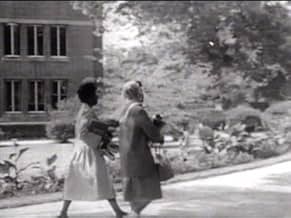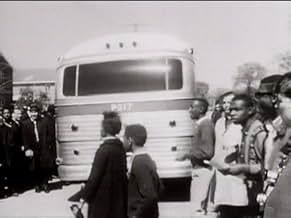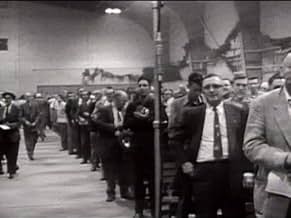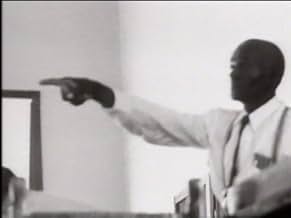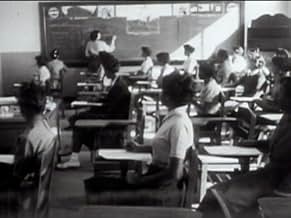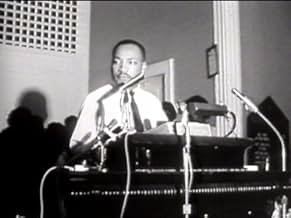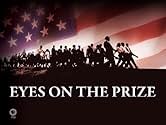अपनी भाषा में प्लॉट जोड़ेंA documentary about the American Civil Rights Movement from 1952 to 1965.A documentary about the American Civil Rights Movement from 1952 to 1965.A documentary about the American Civil Rights Movement from 1952 to 1965.
- 1 ऑस्कर के लिए नामांकित
- 11 जीत और कुल 5 नामांकन
एपिसोड ब्राउज़ करें
फ़ीचर्ड समीक्षाएं
This is the most comprehensive, detailed, and informative series of any covering the Civil Rights struggles from the early stages through the 1980's. This is a must see for any person looking to get information and insight on what the struggle for equality was like for black people in America. They compile actual footage from historical events, along with interviews with some of the people who were actually there. This series will make you go through a range of emotions as you actually feel of part of the history that you are viewing. Julian Bond, (who participated in many of these events) does a masterful job a narrating the entire series. This is one series that you must have in your collection.
I have seen parts of the series in no fewer than 3 academic classes of varrying topics during my time at Pepperdine University. This outstanding series is professional to the core, attracting the biggest names of the day to give interviews (from both Civil Rights fighters to pro-segregationists) and give an honest look at the moment in the 1950's and 1960's. Powerfully moving, it brings me to tears each time I watch certain scenes. As comprehensive as any documentary I've seen, Eyes on the Prize gives the low down on the movement, its highs and lows, and provides a very real perspective on why the events played out as they did. A winner in every sense, I give the PBS produced Eyes on the Prize a 10/10 without a second thought.
Kudos for the series.
Kudos for the series.
This series (along with the sequel, "Eyes on the Prize II") is a classic documentary that, in many ways, pointed to the techniques later adapted by Ken Burns in his documentaries. Given the availability of film and first-person accounts, as well as photos, this is a far more moving and affecting film. Beginnings are difficult, and one might quibble with how the first part brings the viewer "up to speed" on African American history before the 1950's, the immediate attention to the story of Emmitt Till makes up for much of that missing narrative, by showing in graphic detail the status of African Americans in the United States, particularly the deep South. The rest of the series fills in a great amount of detail in the ensuing decade up to 1965 and the Voter-Rights act of that year.
Three things to point out in detail that made this a strong film. First, the framing of the narrative before Brown v. Board to emphasize that the Brown case did not come about in isolation, but as part of a broader strategy of the NAACP (if you are further interested in this, you should look at "The Road to Brown") led by Charles Houston and Thurgood Marshall. Second, the film did not solely rely on newsreel footage and interviews, but effectively used still photos to convey drama and set pacing. On that last issue, the third point (which may have been for cost and copyright reasons for all I know) was the minimal use of music in the film. Some of the most powerful moments in the film come from a long (4-5 seconds) shot of a dramatic photo with only silence.
Why only 9 stars and not 10? I would like to have seen a bit more in the lead up to the 1950's, and some emphasis on larger context of the Cold War and such -- particularly a bit more on radical African Americans who were targeted by the state for prosecution before the forties, as well as more on the legacies of W.E.B. Dubois and Booker T. Washington as backdrop for later debates within the movement. These are really historical concerns, and overall, the film is worth seeing. I hope that soon the copyright issues will be sorted out so that this can be released on DVD, as many video copies available now are showing their age after many viewings!
Three things to point out in detail that made this a strong film. First, the framing of the narrative before Brown v. Board to emphasize that the Brown case did not come about in isolation, but as part of a broader strategy of the NAACP (if you are further interested in this, you should look at "The Road to Brown") led by Charles Houston and Thurgood Marshall. Second, the film did not solely rely on newsreel footage and interviews, but effectively used still photos to convey drama and set pacing. On that last issue, the third point (which may have been for cost and copyright reasons for all I know) was the minimal use of music in the film. Some of the most powerful moments in the film come from a long (4-5 seconds) shot of a dramatic photo with only silence.
Why only 9 stars and not 10? I would like to have seen a bit more in the lead up to the 1950's, and some emphasis on larger context of the Cold War and such -- particularly a bit more on radical African Americans who were targeted by the state for prosecution before the forties, as well as more on the legacies of W.E.B. Dubois and Booker T. Washington as backdrop for later debates within the movement. These are really historical concerns, and overall, the film is worth seeing. I hope that soon the copyright issues will be sorted out so that this can be released on DVD, as many video copies available now are showing their age after many viewings!
I've watched this dozens of times. It is the most important documentary series ever made. Not even Ken Burns finest work, or Errol Morris, have anything on this series.
FYI The IMDB tagline describes this as a documentary about the Civil Rights movement "1952-1965". It covers 1952 thru the early 1980's.
Surely the original film makers are retired or passed on, but it would be amazing to see a second volume or new episodes of this series. 1980-2020.
FYI The IMDB tagline describes this as a documentary about the Civil Rights movement "1952-1965". It covers 1952 thru the early 1980's.
Surely the original film makers are retired or passed on, but it would be amazing to see a second volume or new episodes of this series. 1980-2020.
In a world where black children search for pride on street corners, and find their idols in drugged out athletes, absent fathers, idiots and zombies, in these television hours lie little glimpses of hope, shining examples of the people who fought and died for love of the future. I make it a point to watch this program at least once a year and show it to anyone who seems to have even a passing interest in tomorrow. Malcolm X, Martin Luther King, Fannie Lou Hamer, The black Panther Party, busing in Boston, political mobilization in Chicago, the fight for freedom has never been given such a detailed depiction. This film is an encyclopedia of black pride and should not only be seen, but should be seen as often as is necessary to restore freedom and democracy to this country.
क्या आपको पता है
- ट्रिवियाThe series was unavailable from 1995 to 2006 owing to copyright issues. Licenses for "Happy Birthday", news footage, various photographs, songs, and lyrics used in the film expired in 1995, and the film company Blackside could not afford to renew these licenses. A grant from the Ford Foundation enabled them to renew the licenses. The series was rebroadcast and released to DVD in October 2006.
टॉप पसंद
रेटिंग देने के लिए साइन-इन करें और वैयक्तिकृत सुझावों के लिए वॉचलिस्ट करें
- How many seasons does Eyes on the Prize have?Alexa द्वारा संचालित
विवरण
- रिलीज़ की तारीख़
- कंट्री ऑफ़ ओरिजिन
- भाषा
- इस रूप में भी जाना जाता है
- Eyes on the Prize II
- उत्पादन कंपनी
- IMDbPro पर और कंपनी क्रेडिट देखें
- चलने की अवधि6 घंटे
- रंग
इस पेज में योगदान दें
किसी बदलाव का सुझाव दें या अनुपलब्ध कॉन्टेंट जोड़ें



